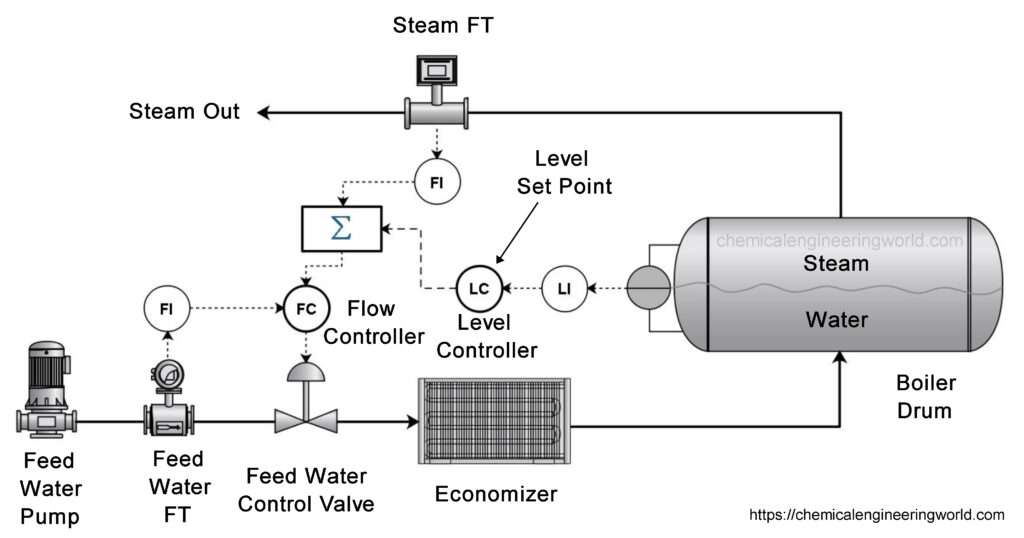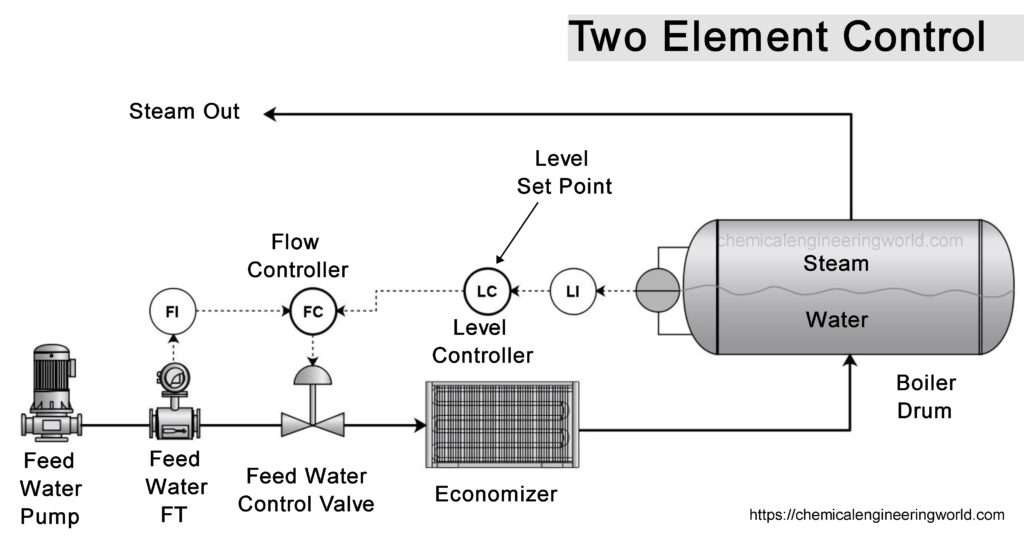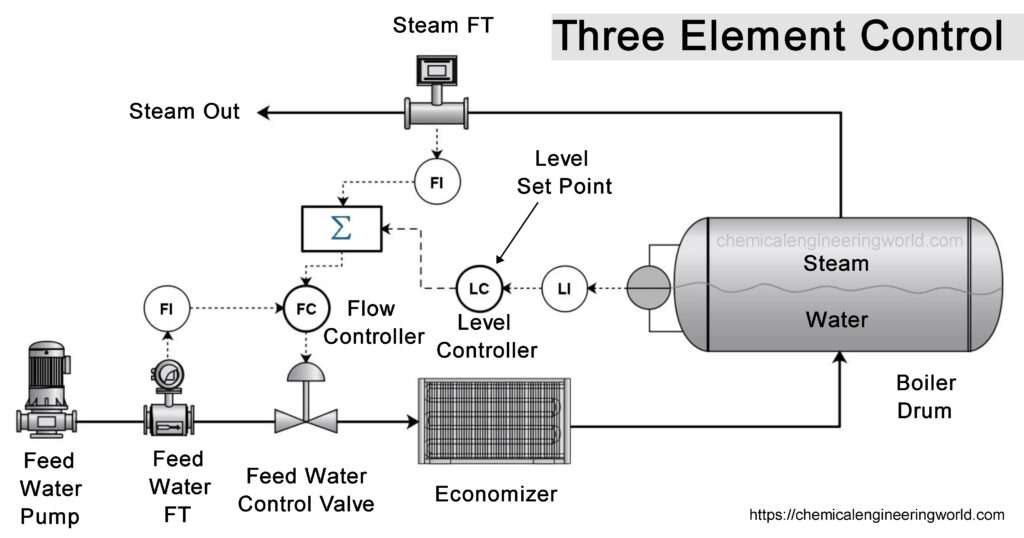Boiler Drum Level Control

Boiler Drum Level Control
Boiler Drum Level Control
Boiler is equipment in which a liquid is heated in order to vaporize it; the liquid phase is converted into the vapor phase. Usually the working fluid used in boilers is water and it is used to convert liquid water to steam. Boiler drum is where the liquid water and steam are separated.
It is very important to control the water level in the boiler drum. The level should not be too high or too low. The water enters the boiler drum after passing through an economizer, for this; usually the water from the bottom of the boiler drum is transported around the furnace and then input back into the boiler drum. If the water level becomes low then it is possible that this circulation will be affected and thus the tubes may get affected, if the water level becomes too low then it may cause the boiler to run dry thus causing mechanical damage.
If the water level is allowed to be too high then steam purity may get affected. It may cause more droplets of water to pass through the demister and then enter the superheater along with the saturated steam. In order to vaporize those water droplets more heat will be required, the effect will be that the thermal load will increase; this also implies that life of tubes may get reduced. If the water level gets too high then it may be possible that such amounts of liquid enter are transported downstream that they damage the equipments.
Usually it is a standard to maintain the boiler drum level at 50% during operation.
The designs for boiler drum level control are referred to as single element, two element and three element control.
Single Element Control:

In this type of control mechanism, water is fed into the boiler drum through a single or multiple pipes and thus a single or multiple control valves. Only the water level in the drum is measured through a level transmitter and the information is sent to the controller. Based on the obtained information if is compared to the set point and then control valves are manipulated in order to increase or decrease the flowrate of the water inside the boiler drum. It takes some time to effect changes in this type of mechanism thus it is only used wherever the residence time is very large.
Two Element Control:

In this mechanism, one more variable is controlled in the process apart from the level. That variable is the flowrate. The flowrate could be of feed water or the steam, any one of them. They form a cascade control system with the level controller being in the primary loop and the input from it is used to set the secondary loop which consists of flow rate controller. The accuracy is much better and also faster than single element control.
Three Element Control:

In this mechanism, the drum level is controlled, the flowrate of feed water and the steam flowrate is controlled. It forms a cascade plus feedforward system. The output from the level control is input into the feedforward steam flowrate and the measurement of the steam flowrate is used to set the feed water flow rate. This combination is the most accurate among all three. The only drawback is that three element control cannot be used for low boiler load conditions because at such conditions it is very difficult to measure steam flowrate accurately. At high boiler load, this mechanism is most useful.
Reference:- blog.opticontrols






























